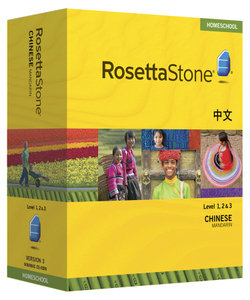


Therefore, if you do decide to set your focus on learning Chinese, it's critical to understand both the importance and limitations of pinyin, as well as the cultural significance and history of Chinese characters.Ĭheck out CLI's Chinese Pinyin Chart to see all the phonetic combinations used in the Chinese language.If your dream is to master a foreign language, there's no better teacher than Rosetta Stone. Pinyin is the Rosetta Stone to unlocking this wonderful universe. Characters make learning Chinese feel exciting and adventurous as you uncover the "hidden meaning" behind radicals, characters, and phrases. They are living pieces of Chinese history deeply embedded in Chinese culture. Pinyin is the Rosetta Stone of the Chinese LanguageĬhinese characters are beautiful, intriguing, and meaningful. Learning Chinese characters allows you to more easily associate meaning with pronunciation. "Guo" is even one of the 100 most common Chinese family names (郭 Guō).Īs you advance in your studies, trying to remember these different words as a single pinyin combination becomes inefficient and unnecessarily difficult. Most crucially, nearly every pinyin sound has multiple commonly used Chinese characters that it represents.įor example, take the pinyin sound “guo.” This phonetic combination can mean fruit (果 guǒ), country (国 guó), to cross (过 guò, as in 过马路 guò mǎlù), cooking pot (锅), and a variety of other words. There are many reasons why learning characters alongside pinyin is essential. Many students wonder if they can simply learn pinyin and avoid Chinese characters altogether. Can I Just Learn Pinyin and Not Chinese Characters? However, remember that this system is merely a tool to assist in the Chinese learning process. Learning pinyin early in your Chinese studies helps establish a solid foundation with the language and will help you learn new words. In addition, native Chinese speakers use pinyin on a daily basis when typing on computers or mobile phones. Though pinyin disappears from textbooks after primary school, it is still useful for learning the pronunciation and tones of new characters.

In fact, however, native Chinese students also learn the system alongside Chinese characters starting in kindergarten. Students of the Chinese language often believe that only non-native speakers use pinyin. Sin Wenz reached its peak popularity in the 1940s.

In the 1930s, the Chinese Communist Party, in conjunction with leadership from the USSR, introduced a phonetic alphabet using Roman letters called Sin Wenz, meaning "new writing." The goal was to improve literacy in the Russian Far East, namely for Chinese immigrants. Due to continuing dissatisfaction with existing romanization methods, scholars continued to search for a better solution. Competing Written Systemsįast-forward to the early 20th century and you’ll find several competing romanization systems for Mandarin: Wade-Giles, Chinese Postal Map Romanization (which infamously gave us Peking for Beijing), and Gwoyeu Romatzyh.Įach of these systems came with its share of problems, however. This system used the Roman alphabet to transcribe the Chinese language. When did scholars first transcribe Chinese using Western alphabets? In 1605, the Jesuit missionary Matteo Ricci published the first known Chinese-to-Western text, titled Xizi Qiji. Pinyin, for our purposes, is a linguistic tool that assists in the language learning process and allows you to type in Chinese on your computer or smartphone. Chinese is tough, but learning pinyin early in one's Chinese studies dramatically accelerates the speed at which a typical student acquires the language. Enter: pinyin.Ĭhinese Pinyin, the official romanization system for Standard Chinese in mainland China, is the most commonly used phonetic system for writing Mandarin using the Latin alphabet. That means the Chinese character system is at least 3,000 years old.īut Chinese characters are notoriously difficult to learn, even for native speakers. In fact, archaeologists have uncovered written Chinese script from as early as the late Shang Dynasty (1600 - 1046 BCE). The Chinese language has a long history-the earliest know origins date back 6,000 years. Pinyin: An Integral Part of Learning Chinese


 0 kommentar(er)
0 kommentar(er)
